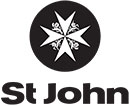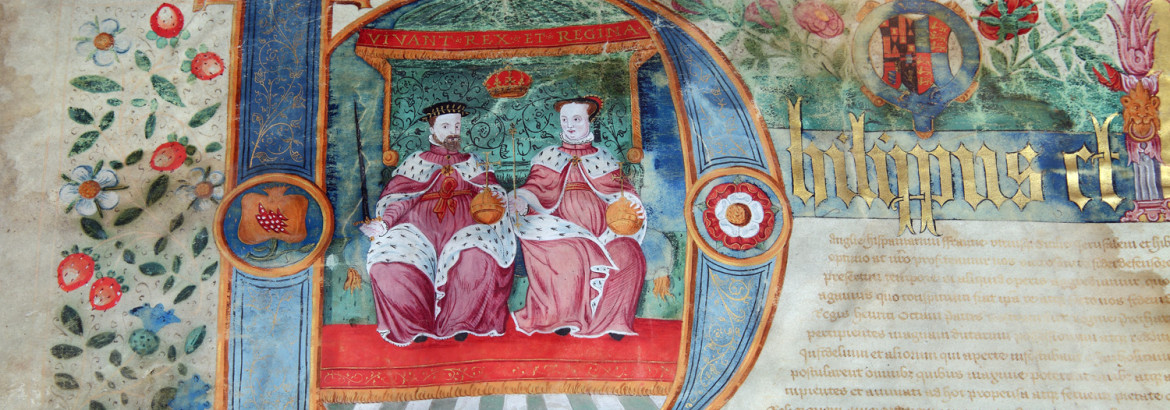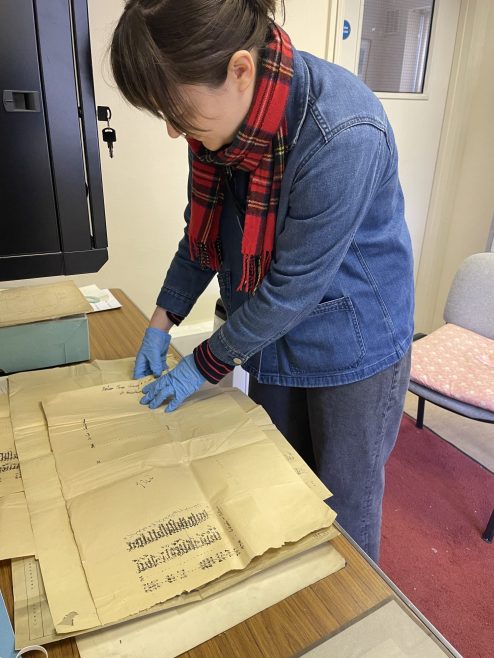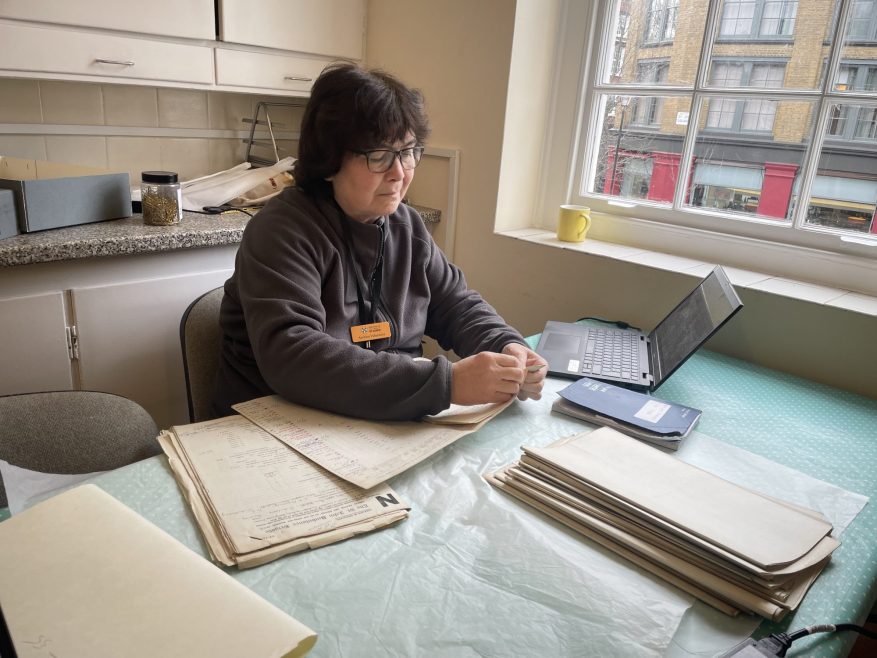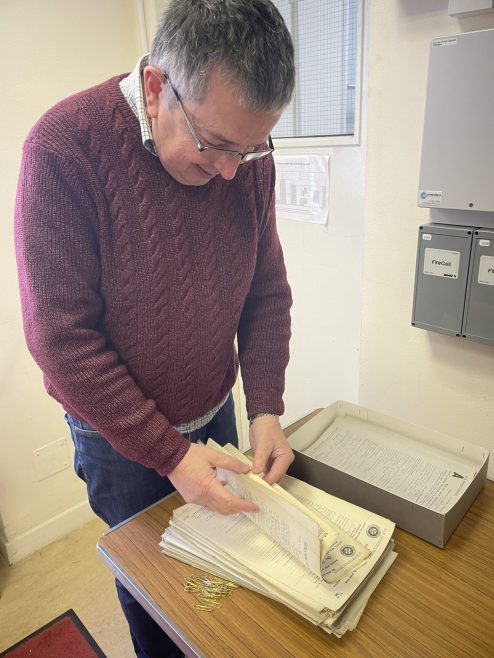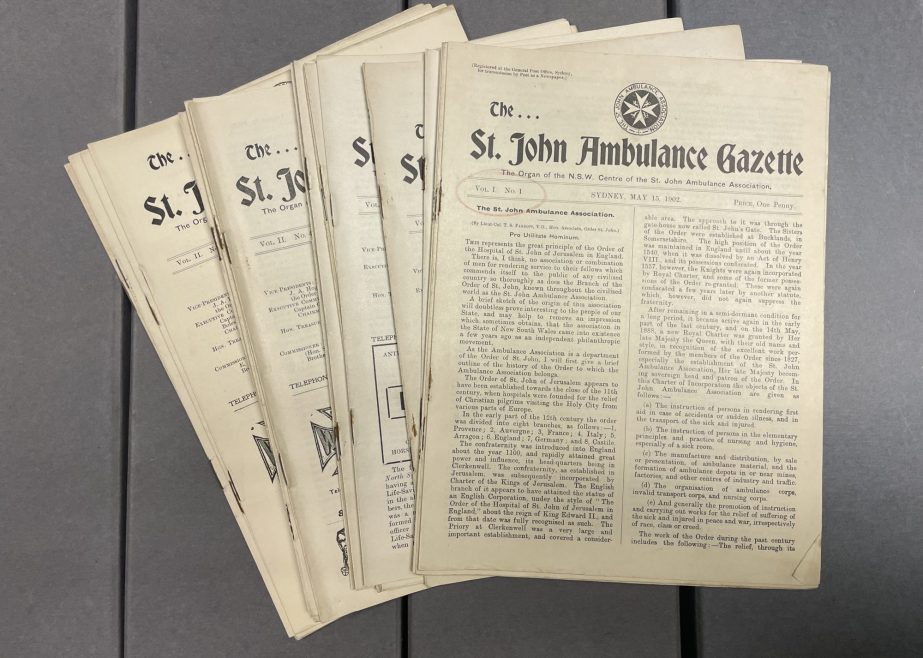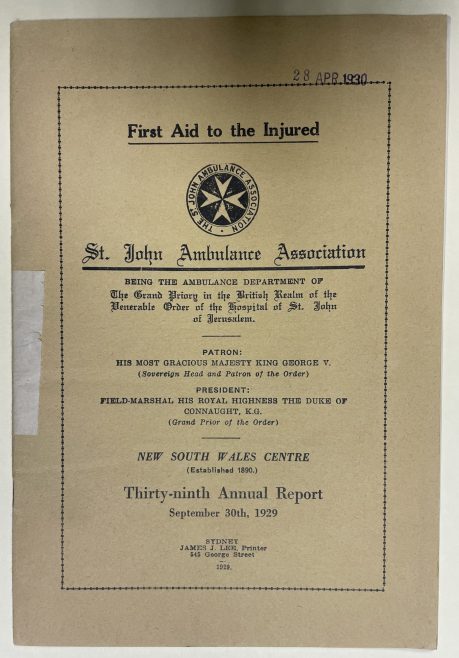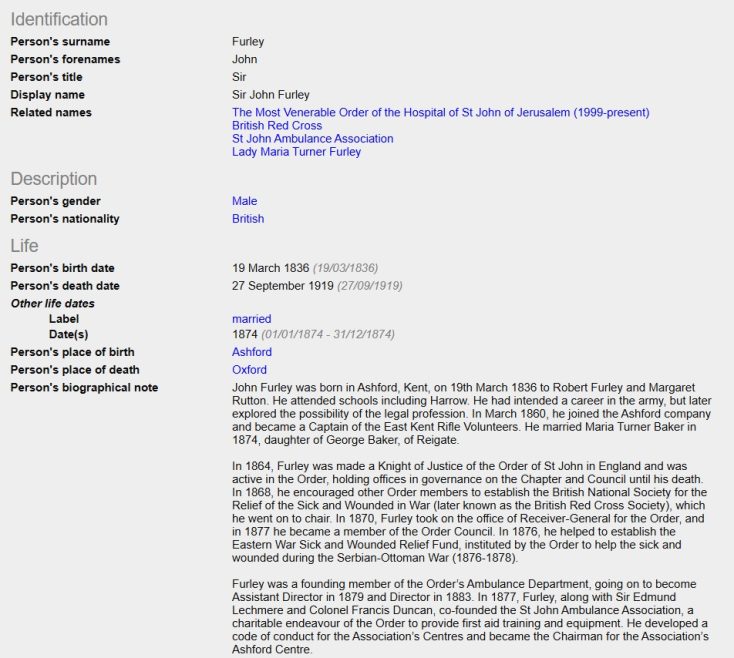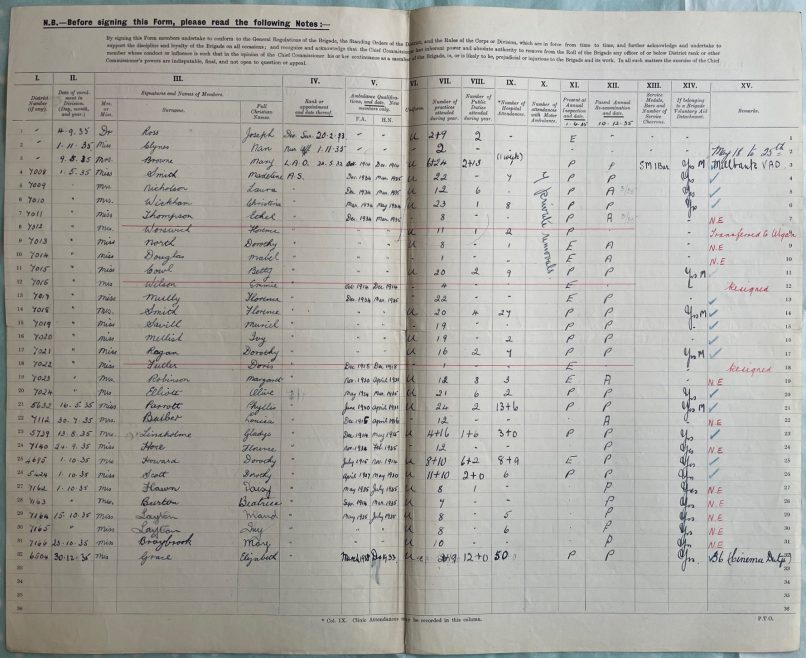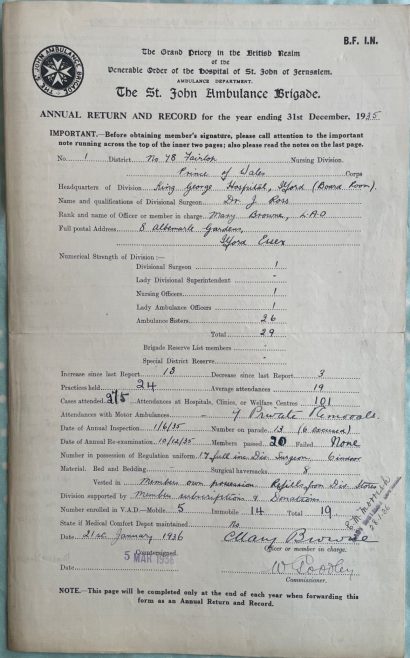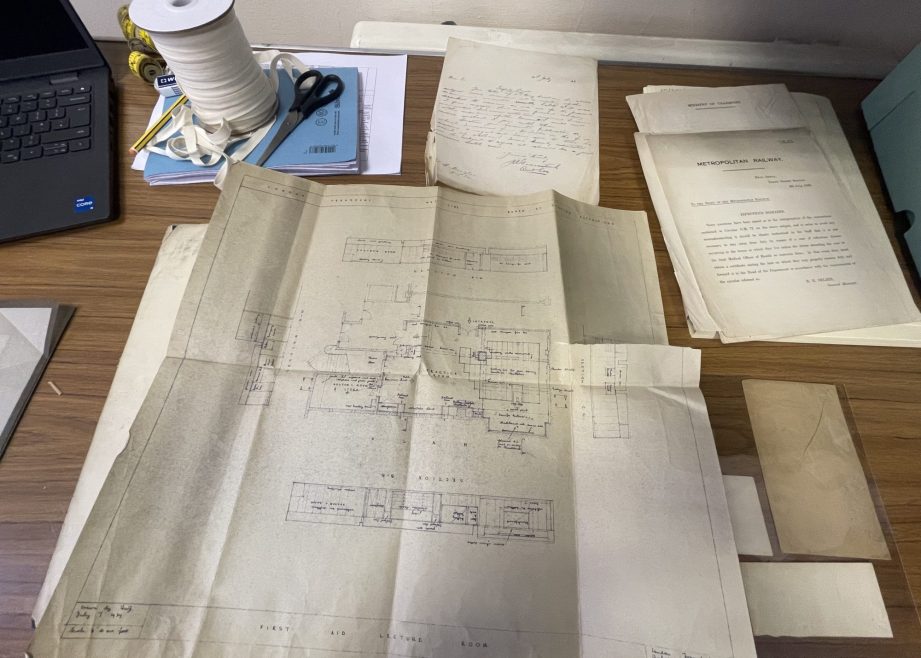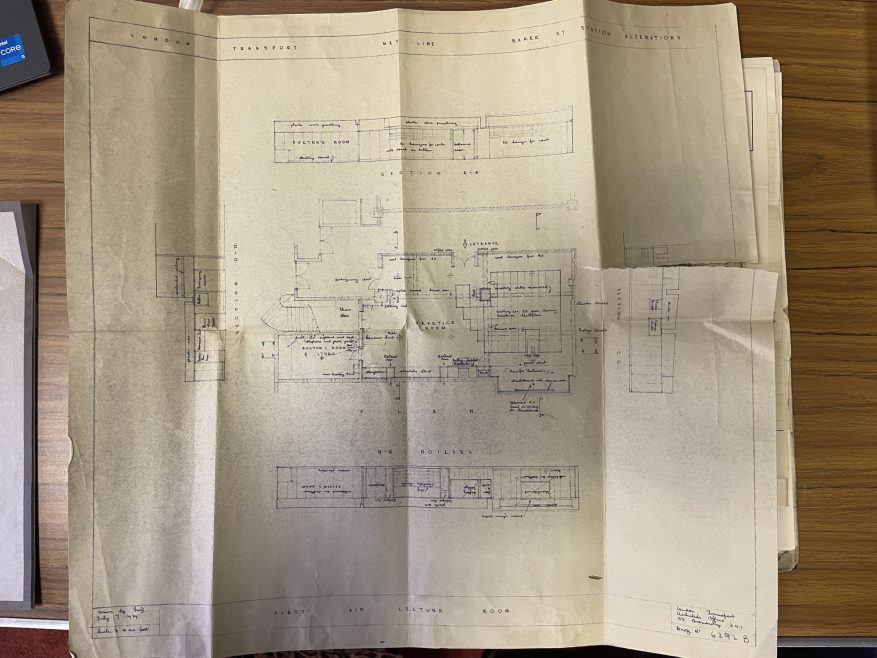We’ve come to the end of the first month of 2025, and our Archives Revealed project to catalogue the founding records of St John Ambulance c.1870 – 1939 is still underway. This year, our monthly Archives Revealed blog posts will provide a regular update on the progress of the project, our fun and interesting findings, and some behind-the-scenes photographs of the team at work. Read on to hear about what the team have been up to…
January 2025 in the Archive – Joyce (Project Volunteer)
Throughout January I have continued to catalogue the Annual Return and Record Sheets for St John Ambulance Brigade Nursing Divisions, held in the St John Archive. These forms were known as B.F.1.N and were created to collect and contain information on Brigade members. The cataloguing this month has been concerned with B.F.1.N forms dating from the 1920s – mid-1950s.
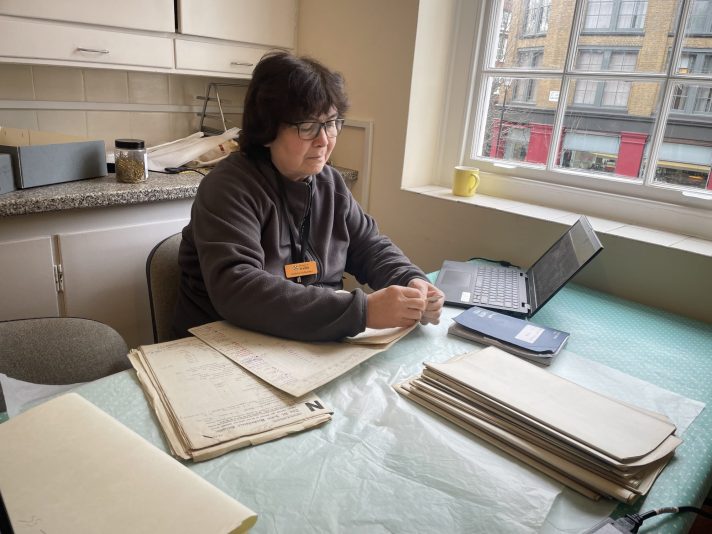
Each B.F.1.N looks very similar, not surprising given that the purpose of an administrative form is to collect standardised data. However, these records are fascinating in their content as they contain the details of the Brigade members that made the volunteering work of St John Ambulance Brigade come to life. The B.F.1.Ns contain space for additional comments on members such as reasons for resignations, transfers or missed inspections, work in military and civilian hospitals, illnesses, family circumstances, air raid precaution work and evacuations.
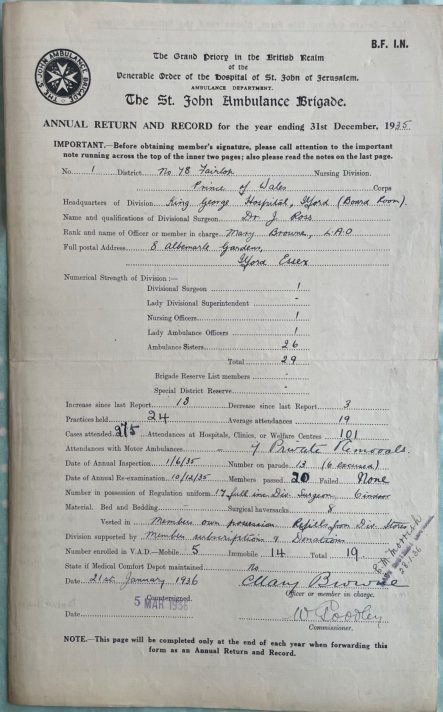
Occasionally there is a hint on the character of an individual. Mrs. Peabody (Divisional Superintendent of No. 72 Tudor (Enfield) Nursing Division) notes on one of the Division’s 1940’s B.F.1.N returns ‘I must sincerely apologise for these forms having been damaged, but it was due to enemy action’. First Aid training teaches us to be calm in the face of complicated situations! The No. 76 East London Nursing Division B.F.1.Ns record the names of Brigade members whose families are likely to have come to the area from many parts of the world. I noted that the 1941 B.F.1.N return had many names of likely Jewish heritage. Given what was happening in the world at that time I thought it inspiring that people, probably with fears for their future personal safety, could still give time, energy and commitment to St John Ambulance Brigade.
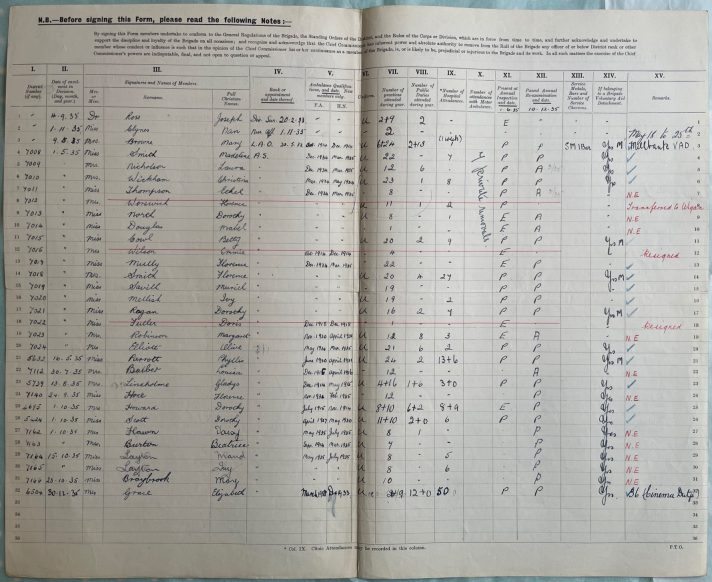
January 2025 in the Archive – Sophie (Archivist)
So far on the project this month, I’ve had a combination of manual labour, sorting in-scope records relating to Australia ready for cataloguing, and developing authority records for the various people and organisations associated with the catalogued in-scope collections so far.
As more and more of the collection is catalogued and repackaged, we’ve needed to shuffle the archive storage area around to accommodate the newly catalogued material in one place for ease of access. One of my first tasks this year was to move boxes and collections around to provide a whole clear bay ready to welcome newly catalogued material (and it’s a job I was pleased not to be carrying out at the height of summer).
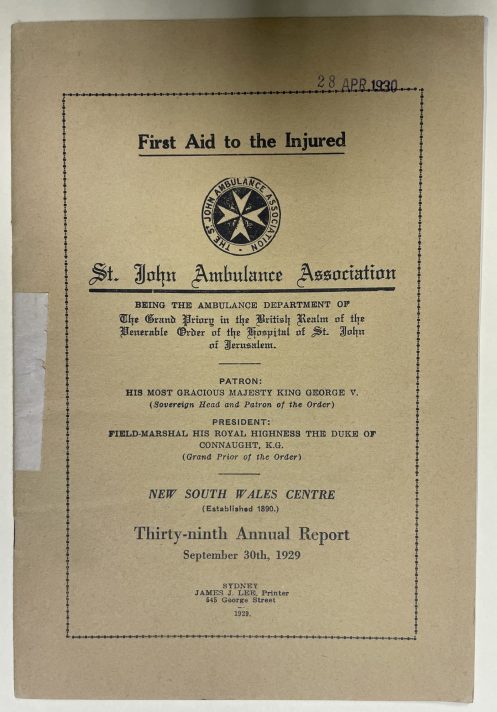
Over the last seven months or so, I’ve been cataloguing the in-scope international records. With 10 countries completed so far, the next country to work on was Australia. There are nearly twenty boxes of records relating to St John in Australia in the Archive, so I first had to check each box to see what we have, identify the in-scope material, and create the catalogue structure that will accommodate the records. I completed the initial sort and preparation of the records for cataloguing, but I’ll need to do some research into the formation of St John Ambulance in Australia before I can create a sustainable catalogue structure for the country’s records.
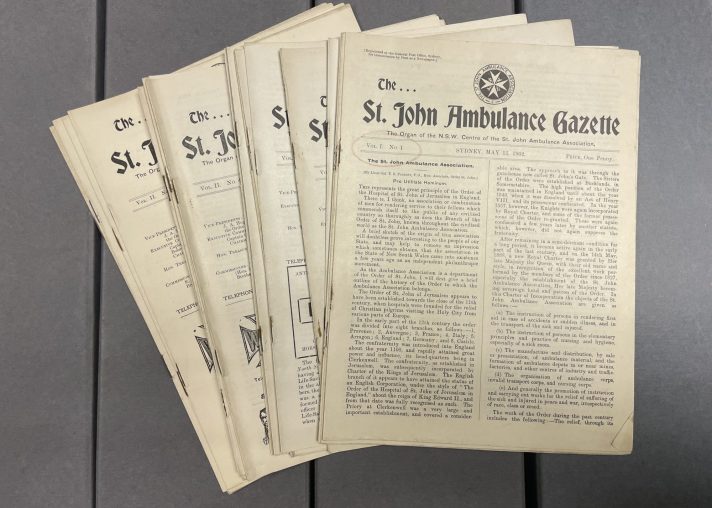
Finally, I’ve been working on authority records for the in-scope collection. Authority records are, essentially, a record of biographical and important information about individuals and organisations. We create these to provide contextual information to the collections we are cataloguing, for example, to identify the person or organisation who created a record or record set, the person or organisation who is the subject of a record or record set. Authority records are an important feature of an archive catalogue, and they can take time to create. There are many individuals, organisations, and departments who created the records which we are cataloguing or who are the subject of the records, and it is important that we provide as thorough an authority record for these people and organisations to both understand their connection to St John Ambulance and the collection, and to communicate this to anyone who may be using the catalogue in the future.
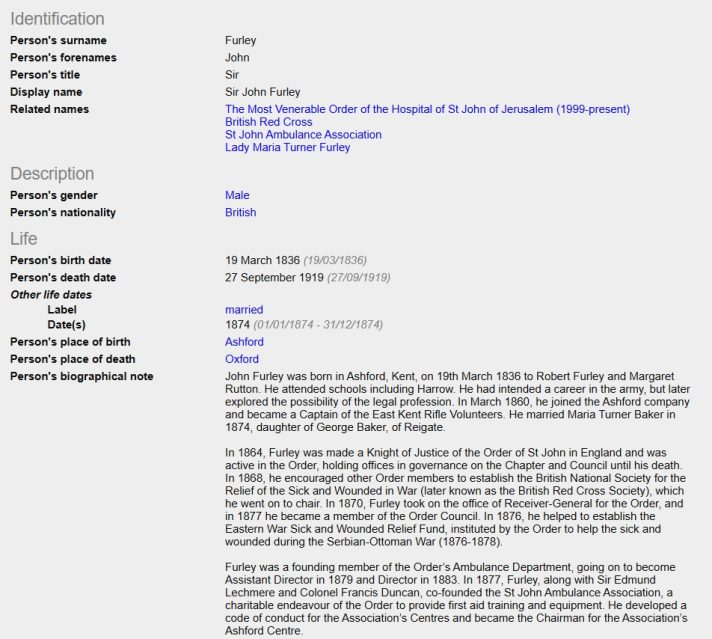
January 2025 in the Archive – Pat (Project Volunteer)
January has been a slow month for me for a few reasons, however work continues on reviewing, collating, and recording the annual returns for the St. John Ambulance (Ambulance) Divisions.
So far, we have recorded up to No. 58/1 Post Office – Mount Pleasant Division. All the returns are known as B.F.1.A or B.F.2.A and record a vast array of details including the creation of the Division, how many members were in each Division, their efficiency and how many hours they undertook as well as Drill sessions (training evenings). Like the B.F.1.Ns they contain space for additional comments on members such as reasons for resignations, transfers or missed inspections, work in military and civilian hospitals, illnesses, family circumstances, air raid precaution work and evacuations.
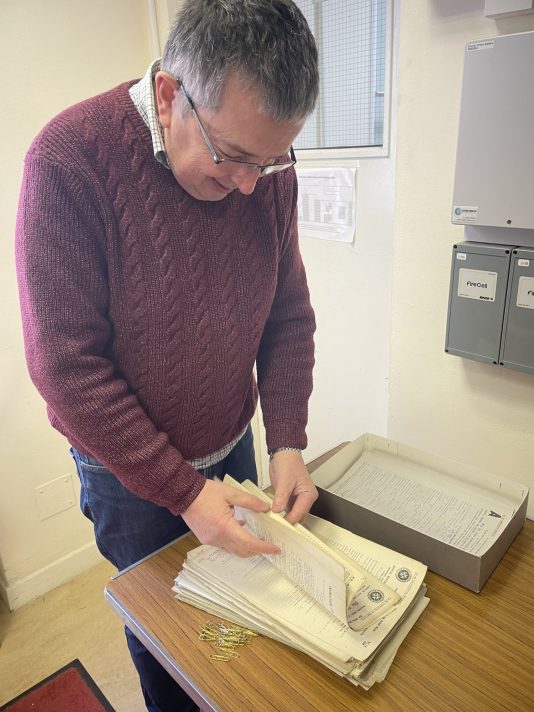
There is often a fond memory when I see some of the Division names that I recognise having volunteered next to them but sadly no longer exist, having disbanded over the years. My next task is a personal one where I review and record the records of the No. 37 Paddington Great Western Railway Ambulance Division – this is quite close to me as it was my original Division, and although not in scope, I have seen my handwriting on some of the B.F.1’s that I completed in the when I was the Divisional Secretary.
January 2025 in the Archive – Josie (Project Cataloguer)
January has been a nice mix of strategy and cataloguing in the Archive. At the start of the month, I attended my first meeting of the Archives Revealed Project Steering Committee, where a committee member asked a brilliant question about our decision-making process for establishing cataloguing priorities. Our project is on the home straight now with our deadline approaching in August, so this seemed like a brilliant opportunity to take stock of progress so far, and to refine our activities between now and the end.
To start with, Sophie surveyed the rest of the material deemed to be ‘in-scope’ founding records for the project. This involved a lot of spreadsheet activity – scouring our vast inventory for those remaining records and adding them to our proposed arrangement document (this is essentially a colour-coded hierarchical tree structure which guides the cataloguing process). Together we came up with a prioritisation matrix, which is a fancy way of saying we made categories against which we could score the remaining records, helping us see what is and isn’t a priority going forward.
Our categories were: historical and cultural significance to the organisation of St John Ambulance; how much we could consider the records to be defined as ‘founding records’ of the organisation; and predicted research value (both academic and personal/ family history). We then scored each group of records left to be catalogued in each category with a score from one to five and divided the total by three. This was a really useful exercise to keep focussed on the aims of the project, but our scores aren’t quite finalised yet. We’ve shared our list with the Steering Committee for feedback and I’m excited to hear their opinions at our next meeting.
Aside from deciding priorities, this month I’ve been cataloguing the handbooks and manuals of the St John Ambulance Association, and I’ve started cataloguing records relating to specific St John Ambulance Association Centres. Centre records vary greatly – we don’t have records for every Centre, and there isn’t a standard set for each Centre – so each one requires slightly different arrangements.
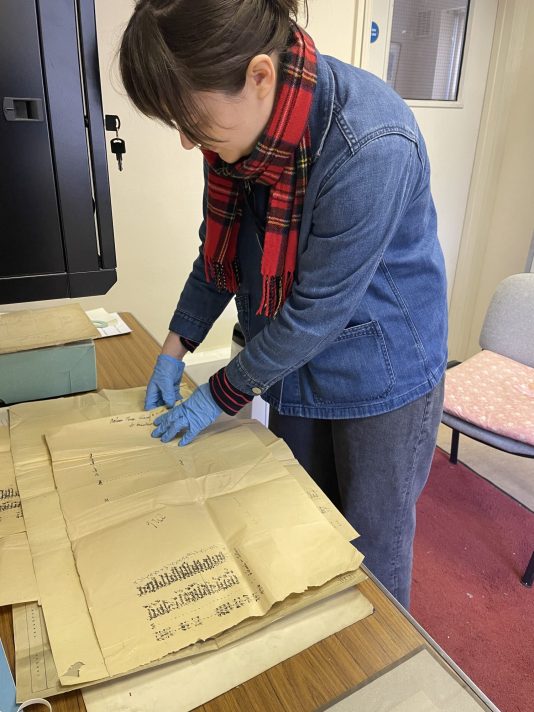
I’ve just finished cataloguing the records of the Metropolitan Railway Centre (1904 – 1948) and there’s a great mix – we’ve got minute books, certificate registers, class registers, exam records, newspaper cuttings, correspondence including discussions of wages, and (my personal favourite) an architectural drawing for the First Aid Lecture Room at Baker Street Station. Together this builds a vivid picture of the Centre’s activities and decision-making processes. I’m excited to see what we’ll find out about other Centres – on to Bristol next!
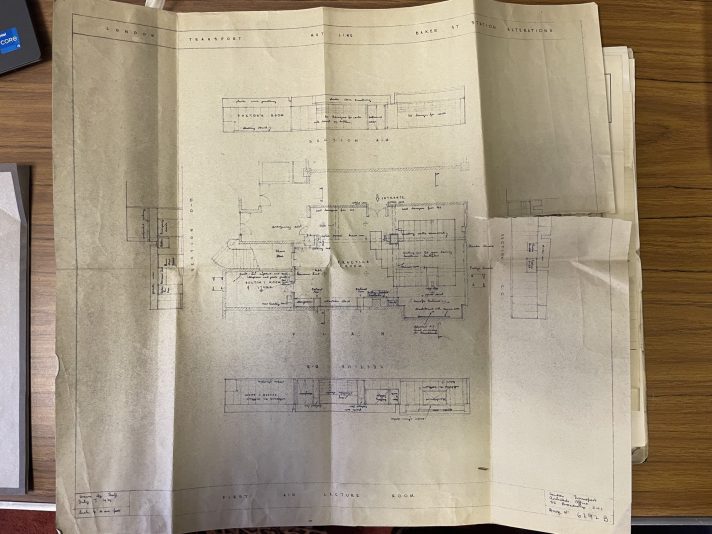
We will be launching a public-facing catalogue of all the records catalogued as part of this project in late summer this year, so keep your eyes peeled over the coming months for more information!

